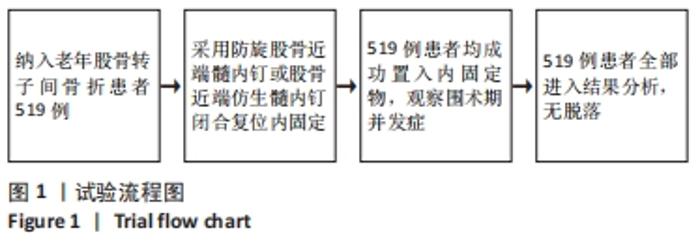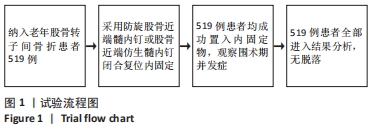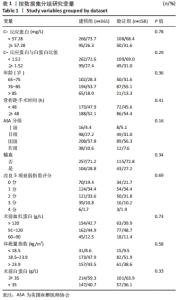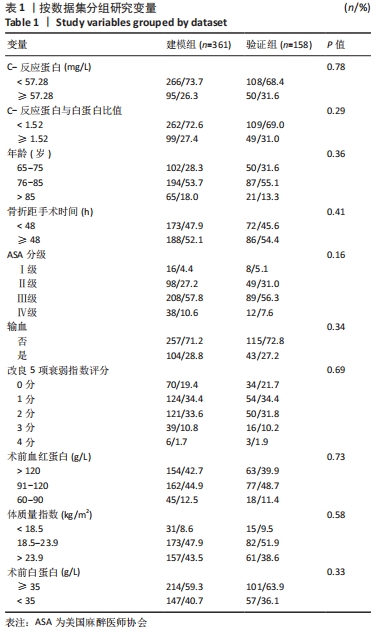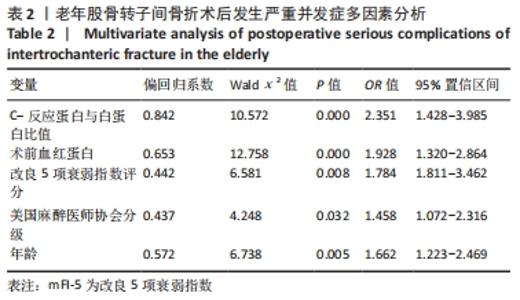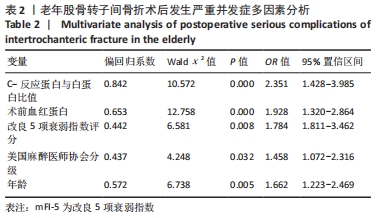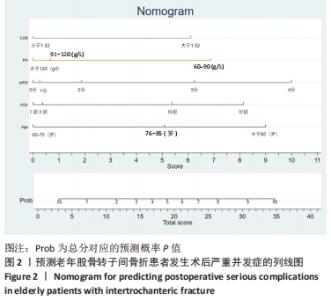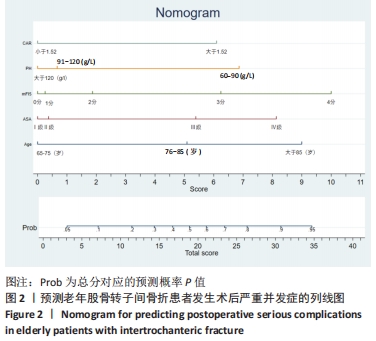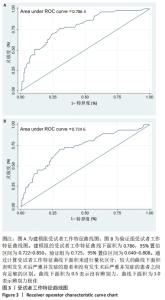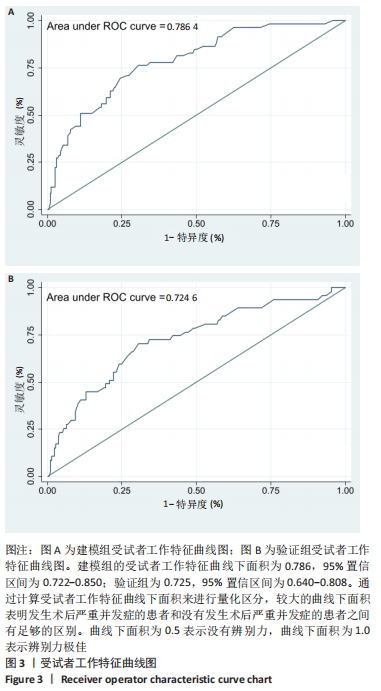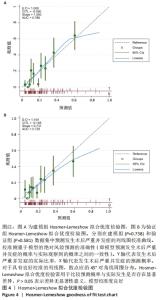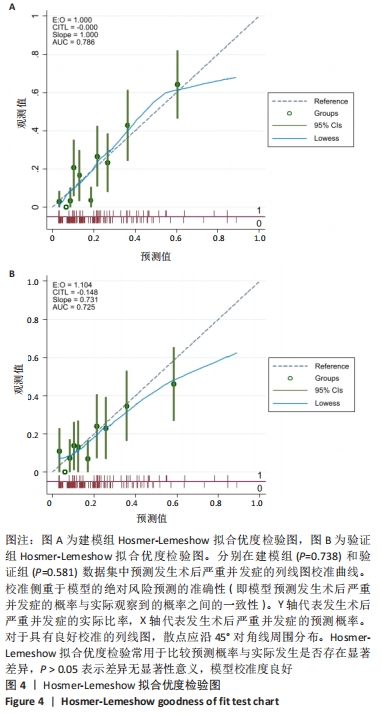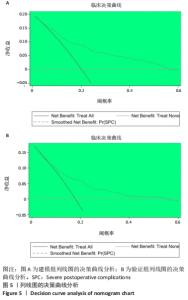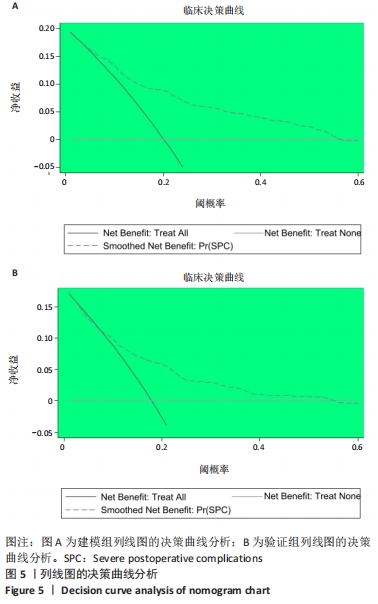[1] ZHANG Q, WU Y, HAN T, et al. Changes in Cognitive Function and Risk Factors for Cognitive Impairment of the Elderly in China: 2005–2014. Int J Environ Res Public Health. 2019;16(16):2847.
[2] BRAUER CA, COCA-PERRAILLON M, CUTLER DM, et al. Incidence and mortality of hip fractures in the United States. JAMA. 2009;302(14): 1573-1579.
[3] WILES MD, MORAN CG, SAHOTA O, et al. Nottingham Hip Fracture Score as a predictor of one year mortality in patients undergoing surgical repair of fractured neck of femur. Br J Anaesth. 2011;106(4):501-504.
[4] ROCHE JJ, WENN RT, SAHOTA O, et al. Effect of comorbidities and postoperative complications on mortality after hip fracture in elderly people:prospective observational cohort study. BMJ. 2005;331(7529): 1374.
[5] SHEN CY, HSIAO CH, TSAI W, et al. Associations between Hip Fracture Operation Waiting Time and Complications in Asian Geriatric Patients: A Taiwan Medical Center Study. Int J Environ Res Public Health. 2021; 18(6):2848.
[6] CHEN L, ZHANG J, ZHANG W, et al. Correlation between C-reactive protein/albumin and contralateral hip refracture after total hip arthroplasty in elderly patients with hip fractures. Ann Palliat Med. 2020;9(3):1055-1061.
[7] HU F, JIANG C, SHEN J, et al. Preoperative predictors for mortality following hip fracture surgery: a systematic review and meta-analysis. Injury. 2012;43(6):676-685.
[8] BHASKAR D, PARKER MJ. Haematological indices as surrogate markers of factors affecting mortality after hip fracture. Injury. 2011;42(2):178-182.
[9] KIM BG, LEE YK, PARK HP, et al. C-reactive protein is an independent predictor for 1-year mortality in elderly patients undergoing hip fracture surgery: A retrospective analysis. Medicine (Baltimore). 2016; 95(43):e5152.
[10] KIEFFER WK, RENNIE CS, GANDHE AJ. Preoperative albumin as a predictor of one-year mortality in patients with fractured neck of femur. Ann R Coll Surg Engl. 2013;95(1):26-28.
[11] FIELDS AC, DIETERICH JD, BUTERBAUGH K, et al. Short-term complications in hip fracture surgery using spinal versus general anaesthesia. Injury. 2015;46:719-723.
[12] FU MC, BODDAPATI V, GAUSDEN EB, et al. Surgery for a fracture of the hip within 24 hours of admission is independently associated with reduced short-term post-operative complications. Bone Joint J. 2017;99-B(9):1216-1222.
[13] PINCUS D, RAVI B, WASSERSTEIN D, et al. Association Between Wait Time and 30-Day Mortality in Adults Undergoing Hip Fracture Surgery. JAMA. 2017;318(20):1994-2003.
[14] TRAVEN SA, REEVES RA, ALTHOFF AD, et al. New Five-Factor Modified Frailty Index Predicts Morbidity and Mortality in Geriatric Hip Fractures. J Orthop Trauma. 2019;33(7):319-323.
[15] CAPKIN S, GULER S, OZMANEVRA R. C-Reactive Protein to Albumin Ratio May Predict Mortality for Elderly Population Who Undergo Hemiarthroplasty Due to Hip Fracture. J Invest Surg. 2021;34(11): 1272-1277.
[16] COLLINS GS, REITSMA JB, ALTMAN DG, et al. Transparent reporting of a multivariable prediction model for individual prognosis or diagnosis (TRIPOD): the TRIPOD statement. BMJ. 2015;350:g7594.
[17] HAGINO H, ENDO N, HARADA A, et al. Survey of hip fractures in Japan: Recent trends in prevalence and treatment. J Orthop Sci. 2017;22(5): 909-914.
[18] NAZRUN AS, TZAR MN, MOKHTAR SA, et al. A systematic review of the outcomes of osteoporotic fracture patients after hospital discharge: morbidity, subsequent fractures, and mortality. Ther Clin Risk Manag. 2014;10:937-948.
[19] MOONESINGHE SR, MYTHEN MG, DAS P, et al. Risk stratification tools for predicting morbidity and mortality in adult patients undergoing major surgery: qualitative systematic review. Anesthesiology. 2013; 119(4):959-981.
[20] WENDT K, HEIM D, JOSTEN C, et al. Recommendations on hip fractures. Eur J Trauma Emerg Surg. 2016;42(4):425-431.
[21] ROBERTS KC, BROX WT, JEVSEVAR DS, et al. Management of hip fractures in the elderly. J Am Acad Orthop Surg. 2015;23(2):131-137.
[22] SASABUCHI Y, MATSUI H, LEFOR AK, et al. Timing of surgery for hip fractures in the elderly: A retrospective cohort study. Injury. 2018; 49(10):1848-1854.
[23] SAUL D, RIEKENBERG J, AMMON JC, et al. Hip Fractures: Therapy, Timing, and Complication Spectrum. Orthop Surg. 2019;11(6):994-1002.
[24] CANET J, GALLART L, GOMAR C, et al. Prediction of postoperative pulmonary complications in a population-based surgical cohort. Anesthesiology. 2010;113(6):1338-1350.
[25] XU L, YU C, JIANG J, et al. Major adverse cardiac events in elderly patients with coronary artery disease undergoing noncardiac surgery: A multicenter prospective study in China. Arch Gerontol Geriatr. 2015; 61(3):503-509.
[26] KARRES J, KIEVIET N, EERENBERG JP, et al. Predicting Early Mortality After Hip Fracture Surgery: The Hip Fracture Estimator of Mortality Amsterdam. J Orthop Trauma. 2018;32(1):27-33.
[27] MATSUO M, YAMAGAMI T, HIGUCHI A. Impact of age on postoperative complication rates among elderly patients with hip fracture: a retrospective matched study. J Anesth. 2018;32(3):452-456.
[28] MCMILLAN GJ, HUBBARD RE. Frailty in older inpatients: what physicians need to know. QJM. 2012;105(11):1059-1065.
[29] KASTANIS G, TOPALIDOU A, ALPANTAKI K, et al. Is the ASA Score in Geriatric Hip Fractures a Predictive Factor for Complications and Readmission? Scientifica (Cairo). 2016;2016:7096245.
[30] SIM SD, SIM YE, TAY K, et al. Preoperative hypoalbuminemia: Poor functional outcomes and quality of life after hip fracture surgery. Bone. 2021;143:115567.
|
